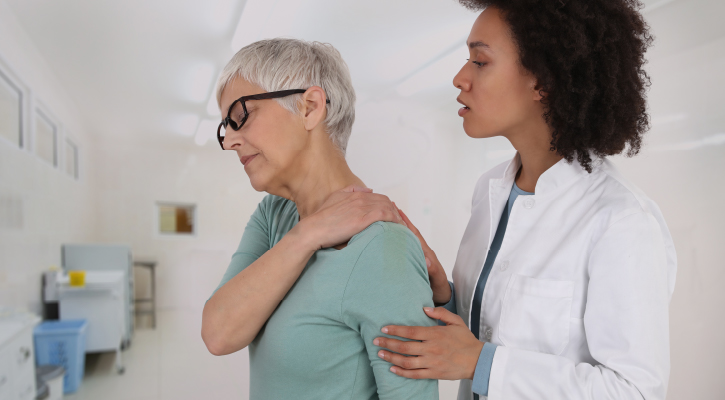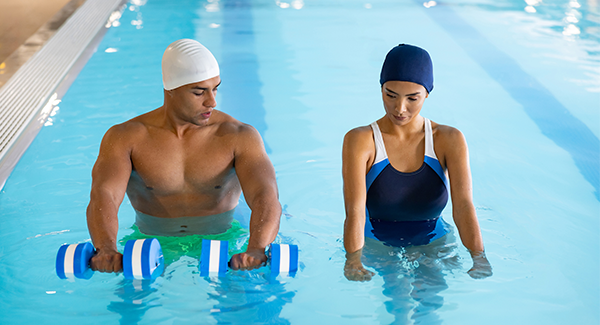8 Natural Therapies for Arthritis Pain
Medication isn't the only way to manage arthritis pain. Look at these eight natural therapies for arthritis.
1. 8 Natural Therapies for Arthritis Pain
Joint pain and stiffness from arthritis can be daily challenges. While conventional treatments work to control inflammation and slow disease progression, there are natural therapies that can play an important role in how you feel. Here are 8 ways you can ease pain naturally.
2. Acupuncture
This form of Chinese medicine involves inserting thin, small needles through the skin at specific acupoints on the body. It is designed to stimulate nerves, muscles and connective tissue, improve blood flow and activate the body’s natural painkillers.
Best for: osteoarthritis, fibromyalgia, low back pain, neck and shoulder pain, bursitis, carpel tunnel syndrome
Best for: osteoarthritis, fibromyalgia, low back pain, neck and shoulder pain, bursitis, carpel tunnel syndrome
3. Massage
Gentle manipulation with moderate pressure has been shown to reduce joint pain and stiffness, and even improve range of motion. However, timing is important. Listen to your body. Massage may not be as helpful during a very active flare when joints are especially tender and sensitive.
Best for: osteoarthritis, low back pain, fibromyalgia, rheumatoid arthritis
Best for: osteoarthritis, low back pain, fibromyalgia, rheumatoid arthritis
4. Tai Chi
Tai chi is a Chinese practice that combines gentle flowing movements, deep breathing and meditation. It has been shown to not only reduce joint pain, but also improve range of motion and function, as well as feelings of well-being. The Arthritis Foundation offers a Tai Chi DVD specifically created for people with arthritis.
Best for: fibromyalgia, rheumatoid arthritis, osteoarthritis
Best for: fibromyalgia, rheumatoid arthritis, osteoarthritis
5. Yoga
Yoga is an Indian practice that uses deep breathing, meditation and body poses. It has been shown to decrease joint pain and stiffness, as well as improve relaxation and reduce stress. The Arthritis Foundation offers a Yoga DVD specifically created for people with arthritis.
Best for: fibromyalgia, rheumatoid arthritis, osteoarthritis, low back pain
Best for: fibromyalgia, rheumatoid arthritis, osteoarthritis, low back pain
6. Weight Loss
Losing one pound removes four pounds of pressure on swollen, painful joints. Maintain a healthy weight by combining a balanced diet with regular physical activity. Make sure you choose food from the five important food groups (fruits, vegetable, lean protein, low-fat dairy and whole grains). Try to do 30 minutes of low-impact exercise five days a week.
Best for: osteoarthritis
Best for: osteoarthritis
7. Physical Therapy
Physical therapists can provide various ways to reduce strain and pressure on painful and swollen joints. These include manual therapy and counseling on proper positioning and body movement. They can also recommend assistive devices such as braces and splints to support joints and shoe inserts to relieve stress on the lower extremities.
Best for: all forms of joint pain (back, knee, shoulder, hand, wrist, ankle)
Best for: all forms of joint pain (back, knee, shoulder, hand, wrist, ankle)
8. Topical Gels
These gels work by stimulating sensory nerve endings in the skin, and the body responds by reducing pain signals through the nervous system, according to Doreen Stiskal, PhD, chair of the physical therapy department at Seton Hall University in South Orange, N.J. Voltaren Gel and capsaicin cream are two options.
Best for: osteoarthritis
Best for: osteoarthritis
9. TENS
Often used by physical therapists and chiropractors, transcutaneous electrical stimulation (TENS) is a form of electrical stimulation used to relieve pain. Small electrodes are placed on the affected area and electromagnetic current is delivered through the skin.
Best for: osteoarthritis
Best for: osteoarthritis
Around the clock and all year long, we’ve got you covered with unique pain management tools and resources you won’t find anywhere else.
People have used natural therapies for centuries. Some, like heat or massage, are still around because they can really help ease discomfort. Others, like specific herbs, have mixed evidence but may be worth discussing with a clinician. Your support helps keep practical, natural pain options easy to find.

Stay in the Know. Live in the Yes.
Get involved with the arthritis community. Tell us a little about yourself and, based on your interests, you’ll receive emails packed with the latest information and resources to live your best life and connect with others.


_1.jpg?width=600&height=325&ext=.jpg)
